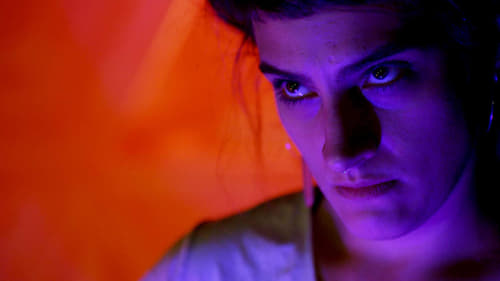Adam Khalil
Рождение : 1988-01-01,
История
Adam Khalil, a member of the Ojibway tribe, is a filmmaker and artist from Sault Ste. Marie, Michigan, whose practice attempts to subvert traditional forms of ethnography through humor, relation, and transgression. Khalil is a core contributor to New Red Order and a co-founder of COUSINS Collective.
![AlienNATION [star spangled]](/assets/images/no-backdrop.png)
Director
A welcome as warning, AlienNATION [star spangled], asks viewers if they’ve ever wondered how to be here? How to leave? How to arrive? Then presents an eerie, guilt ridden, yet self-congratulatory stew of televised recordings of public apologies to Indigenous peoples from the heads of state of settler-colonial nations around the globe.

Director
a Rastafarian vampire film starring and co-written by Oba, an artist and musician based in Brooklyn. Spanning 500 years of colonial destruction, human trafficking and blood sucking, the film reimagines Oba’s origin story. In the late 15th century, Oba is shipped as cargo from West Africa to the Caribbean, where he is seduced by the vampire Christopher Columbus, ensuring his undying allegiance to the colonial project. As the centuries blow by, Oba and Columbus work behind the scenes, pulling the strings of ‘new world’ geopolitics as they spread vampirism across the Western Hemisphere. Combining film forms and genre tropes, Nosferasta examines the guilt of being complicit in imperial conquest, while acknowledging the extreme difficulty of unlearning centuries of vampiric conditioning. Ultimately, the film tackles an uncomfortable question: How can you decolonise yourself, if it’s in your blood?

Director
Efforts to “decolonize” institutions are embodied in ritual acts of acknowledging Indigenous presence and claims to territory. However, without continuous commitment to serve as accomplices to Indigenous people, institutional gestures of acknowledgement risk reconciling “settler guilt and complicity” and rescuing “settler futurity”’ How can we escape this entrapment and allow acknowledgement to retain its potential to unsettle? What must we do to begin to undertake a process of endless acknowledgement?

Director
Culture Capture: Crimes Against Reality morphs monuments into metastasizing flesh via ritualized photogrammetric capture and virtual manipulation, clearing space for Indigenous futures. The piece literalizes the violence of settler-colonial propaganda and features high-profile monuments such as the equestrian Theodore Roosevelt statue which stood in front of AMNH in New York City and End of the Trail, both created by American sculptor James Earle Frasier. The video mines the archive of Frasier, going beyond simple iconoclasm to probe deeper, investigating desires for indigeneity that motivated the artist, desires that continue to pervade the myths, dreams, and political foundations of the so-called americas.

Director
A video which introduces potential NRO informants and accomplices to the concept of Savage PhilosophyTM, which asserts that signs have a real and physical connection with things, that signs take part in things instead of taking their place. Savage Philosophy operates through discourse, which is not merely an instrument for the communication of thought, but an occasion for the deployment of forces. If magic confuses representation with reality, savage philosophy makes representation into reality. This introductory video explores Savage Philosophy’s potential to realize Indigenous futures.

Director
This promotional initiation video lures inductees with promises of decolonization and settler remediation. Imagery of settler-led planetary destruction is juxtaposed with sequences of underground group therapy sessions where settlers can lose, forget, and explore their identities in order to indigenize.

Director
New Red Order Recruitment Video

Director
Considered a staple of Florida tourism, alligator wrestling has been performed by members of the Seminole Tribe for over a century. As the practice has changed over the years, Halpate profiles the hazards and history of the spectacle through the words of the tribe's alligator wrestlers themselves and what it has meant to their people's survival.

Director
The distant future. An orbital facility of unknown origin. Here, the debt of taking a life will finally be repaid... through resurrection. The victims of military violence across time are systematically brought back to life and guided through the all-too-familiar facility. As a staff of identical ushers draws back layers of confusion and pain, the freshly resurrected gradually become aware of the reality of their corporeal reinsertion: perhaps the world of the living is not a world at all; to be alive in this place may merely be an exhibit. We, the resurrected, overwhelmed by a literal second life, will of course discover our one inevitable destination: a place to sit, have a drink, and talk it out.

Director
Half tongue-in-cheek absurdism and half deadly earnest, CULTURE CAPTURE: TERMINAL ADDDITION continues the New Red Order’s ongoing project of “culture capture,” recruiting viewers to participate in a program of practical strategies to counter the “salvage mindset,” which sets aside Indigenous culture and sovereignty by consigning it to the past. These strategies include using new, accessible technologies, such as smartphone apps that produce 3D scans of objects, both of Indigenous material that museums and other institutions may hold and public monuments that celebrate and re-affirm the norms of European settler culture.

Sound Mixer
Adam Khalil and Bayley Sweitzer’s first feature as co-directors, Empty Metal takes place in a world similar to ours—one of mass surveillance, pervasive policing, and increasing individual apathy. The lives of several people, each inhabiting extreme poles of American social and political consciousness, weave together as each attempts to achieve some kind of forward motion, sometimes in contradiction, and always under the eye of far more controlling powers.

Editor
Adam Khalil and Bayley Sweitzer’s first feature as co-directors, Empty Metal takes place in a world similar to ours—one of mass surveillance, pervasive policing, and increasing individual apathy. The lives of several people, each inhabiting extreme poles of American social and political consciousness, weave together as each attempts to achieve some kind of forward motion, sometimes in contradiction, and always under the eye of far more controlling powers.

Writer
Adam Khalil and Bayley Sweitzer’s first feature as co-directors, Empty Metal takes place in a world similar to ours—one of mass surveillance, pervasive policing, and increasing individual apathy. The lives of several people, each inhabiting extreme poles of American social and political consciousness, weave together as each attempts to achieve some kind of forward motion, sometimes in contradiction, and always under the eye of far more controlling powers.

Director
Adam Khalil and Bayley Sweitzer’s first feature as co-directors, Empty Metal takes place in a world similar to ours—one of mass surveillance, pervasive policing, and increasing individual apathy. The lives of several people, each inhabiting extreme poles of American social and political consciousness, weave together as each attempts to achieve some kind of forward motion, sometimes in contradiction, and always under the eye of far more controlling powers.

Director
An urgent reflection on indigenous sovereignty, the undead violence of museum archives, and postmortem justice through the case of the "Kennewick Man," a prehistoric Paleo-American man whose remains were found in Kennewick, Washington, in 1996.

Director
The looped work Culture Capture 001 takes place within the same museum as seen in NRO’s previous video. We come to recognize the masked figures observing Native American objects held inside the collection cases as accomplices of the public secret society. They diligently photograph, scan, and record these objects through smartphones, transferring the images and dimensional information of them into data to potentially be reconstituted and liberated from these settings. Though these objects are presented within the museum’s framings as static, historical, and fixed in the past, they are in fact lively and dynamic, entities within an embodied present. The “Culture Capture” project is introduced through demonstration as one of the potential processes that accomplices in the anticolonial struggle can undertake, toward liberating, reconfiguring, and transforming institutions towards reparative ends. – Herb Shellenberger

Editor
The last film in Vidokle's trilogy on Cosmism is a meditation on the museum as the site of resurrection-a central idea for many Cosmist thinkers, scientists and avant-garde artists. Filmed at the State Tretyakov Gallery, the Moscow Zoological Museum, The Lenin Library, and the Museum of Revolution, the film looks at museological and archival techniques of collection, restoration and conservation as a means of the material restoration of life, following an essay penned by Nikolai Federov on this subject in the 1880s. The film follows a cast comprised of present-day followers of Federov, several actors, artists and a Pharaoh Hound that playfully enact a resurrection of a mummy, a close examination of Malevich's Black Square, Rodchenko's spatial constructions, taxidermied animals, artifacts of the Russian Revolution, skeletons, and mannequins in tableau vivant-like scenes, in order to create a contemporary visualization of the poetry implicit in Federov's writings.

Editor
INAATE/SE/ re-imagines an ancient Ojibway story, the Seven Fires Prophecy, which both predates and predicts first contact with Europeans. A kaleidoscopic experience blending documentary, narrative, and experimental forms, INAATE/SE/ transcends linear colonized history to explore how the prophecy resonates through the generations in their indigenous community within Michigan’s Upper Peninsula. With acute geographic specificity, and grand historical scope, the film fixes its lens between the sacred and the profane to pry open the construction of contemporary indigenous identity.

Director of Photography
INAATE/SE/ re-imagines an ancient Ojibway story, the Seven Fires Prophecy, which both predates and predicts first contact with Europeans. A kaleidoscopic experience blending documentary, narrative, and experimental forms, INAATE/SE/ transcends linear colonized history to explore how the prophecy resonates through the generations in their indigenous community within Michigan’s Upper Peninsula. With acute geographic specificity, and grand historical scope, the film fixes its lens between the sacred and the profane to pry open the construction of contemporary indigenous identity.

Director
INAATE/SE/ re-imagines an ancient Ojibway story, the Seven Fires Prophecy, which both predates and predicts first contact with Europeans. A kaleidoscopic experience blending documentary, narrative, and experimental forms, INAATE/SE/ transcends linear colonized history to explore how the prophecy resonates through the generations in their indigenous community within Michigan’s Upper Peninsula. With acute geographic specificity, and grand historical scope, the film fixes its lens between the sacred and the profane to pry open the construction of contemporary indigenous identity.

Editor
The second installment of Anton Vidokle’s trilogy on Russian cosmism, The Communist Revolution Was Caused By The Sun, looks at the poetic dimension of the solar cosmology of Soviet biophysicist Alexander Chizhevsky. Shot in Kazakhstan, where Chizhevsky was imprisoned and later exiled, the film introduces Сhizhevsky’s research into the impact of solar emissions on human sociology, psychology, politics, and economics in the form of wars, revolutions, epidemics, and other upheavals. It aligns the life of post-Soviet rural residents and the futurological projects of Russian cosmism to emphasize that the goal of the early Soviet breakthroughs aimed at the conquest of outer space was not so much technical acceleration, but the common cause of humankind in their struggle against the limitations of earthly life.

Cinematography
An actress living in New York performs an audition, then goes to meditation and winds up at a party of artists viewing a film. At home, she and her girlfriend explore buried memories and later nightmares trigger sleepwalking. Finally, the actress enacts a childlike performance inspired by a Frank Wedekind play.
![AlienNATION [star spangled]](/assets/images/no-backdrop.png)




